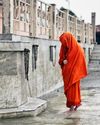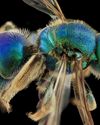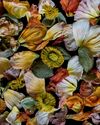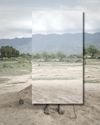
The Quechua had formed an essential part of the agricultural backbone of Andean civilization since the early 15th century when they were conquered by the Chancas, who the Incas subjugated later in that century.
Through centuries Quechua's political and social institutions were strained by Spanish rule and Catholic Church, further alienating the Quechua from the roots of their society. However, when the Spanish conquered the Inca empire in the 16th century and the Quechua came under Spanish rule, it drastically altered Quechua society as the new tribute system required the Quechua to produce unfamiliar crops for the Spanish at the expense of their food supply.
By the early 21st century, the Quechua led isolated lives as marginal farmers in the high Andes. Their religion is an amalgam of Roman Catholicism and native folk beliefs. They practice their traditional woven handicrafts, spinning wool, and weaving fabrics for domestic use and sale to outsiders.
Moving higher into snowcapped Andies live the Q'ero people, who are the last direct descendants of the Inca. Q'ero people live in one of the most remote places in the Peruvian Andes, rugged elevations of snowcapped mountains. According to the Vanishing Cultures Foundation Inc, six major Q'ero villages are home to about 600 people and 6000 llamas & alpacas.
Q'ero people's lives are Earth-centric and revolve around farming potatoes and mazes, rearing alpacas, and weaving wool. The unique Inca-like patterns characterize their master weaving style. Grass-thatched roofs cover the huts built with stone and earth, preserving the traditional way of life of the Q'eres people.
Aga Szydlik
This story is from the {{IssueName}} edition of {{MagazineName}}.
Start your 7-day Magzter GOLD free trial to access thousands of curated premium stories, and 9,000+ magazines and newspapers.
Already a subscriber ? Sign In
This story is from the {{IssueName}} edition of {{MagazineName}}.
Start your 7-day Magzter GOLD free trial to access thousands of curated premium stories, and 9,000+ magazines and newspapers.
Already a subscriber? Sign In

IN THE SHIPYARDS OF DHAKA
A very large shipyard in Dhaka is located on the Buriganga River's banks, directly across Dhaka's old city.

Aga Szydlik INDIA
A JOURNEY INTO THE LAND OF DIVERSITY, CULTURE, AND COLORS

SEBASTIAN PIÓREK EXPLORING Enjoyable LANDSCAPE
I retrieved the idea of nature closely linked to the field of human feelings.

The Extreme Macro Photography of Bees
AN INTERVIEW SAM WITH, DROEGE

JEAN KAROTKIN GYMNOPEDIES
Gymnopédies, Karotkin's ongoing series of botanical portraits, takes its name from a trio of piano compositions by 19th-century French composer Erik Satie.

BUTTERFLIES IN LOVE WITH FLOWERS
I sometimes think Chinese art is not fully appreciated in the West. I was exposed to it growing up in Australia, although my fascination was more with calligraphy.

Lissa Hahn:
Hahn: HOW TO EVOKE A PAVLOVIAN RESPONSE IN HUMANS

AN EXCLUSIVE INTERVIEW WITH ELENA PARASKEVA
Elena Paraskeva is an internationally acclaimed, award-winning Conceptual Photographer and Art Director and, most recently, an official ADOBE instructor.

From a Living Hell to Heaven on Earth: the Inhumanity and Humanity of Humans
In a remote area of western Wisconsin, dogs and cats who otherwise would have ended up on death row are given a reprieve. They can now live out their lives in peace and comfort and with companionship at Home for Life (HFL), which was not afforded them outside the sanctuary's gates.

The Art of DISAPPEARING
In the classical proposal, indigenous people are usually the topic of discussion, but rarely do they have a hand in shaping it.